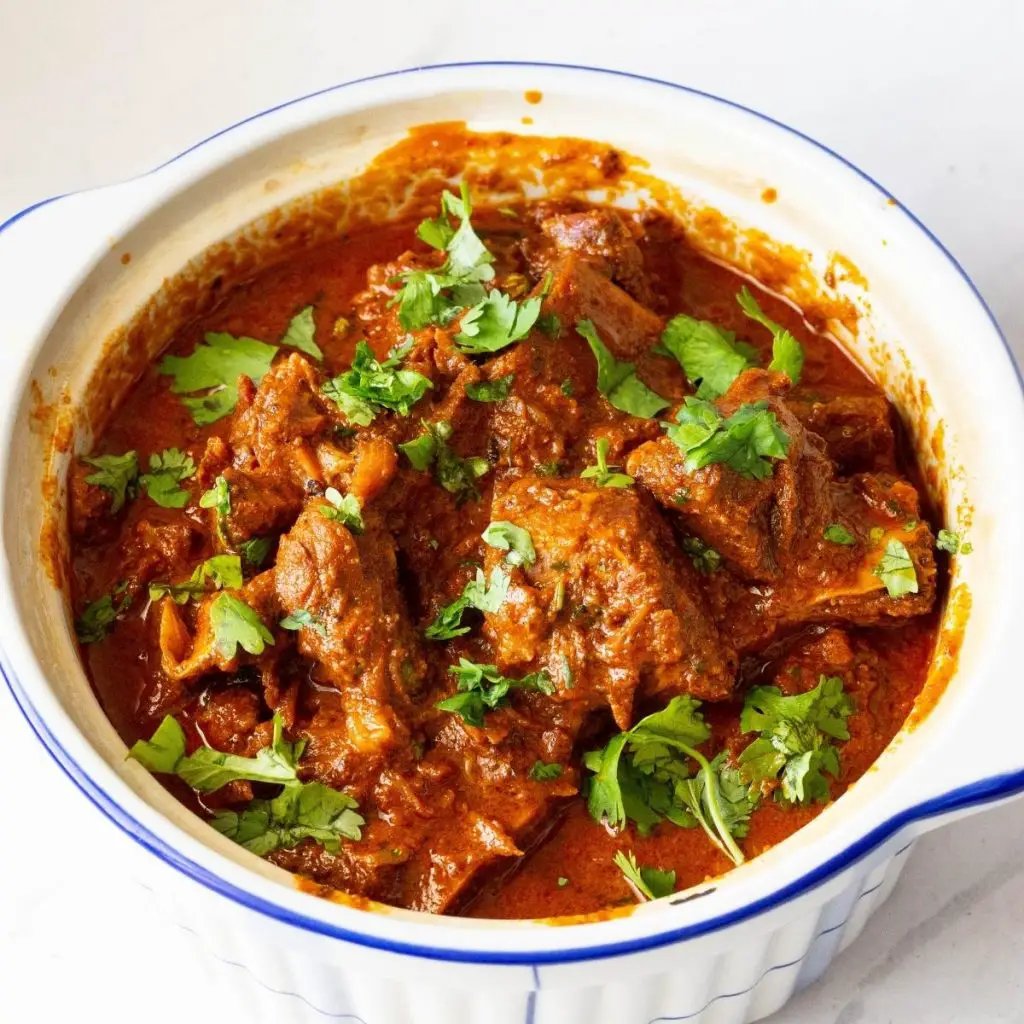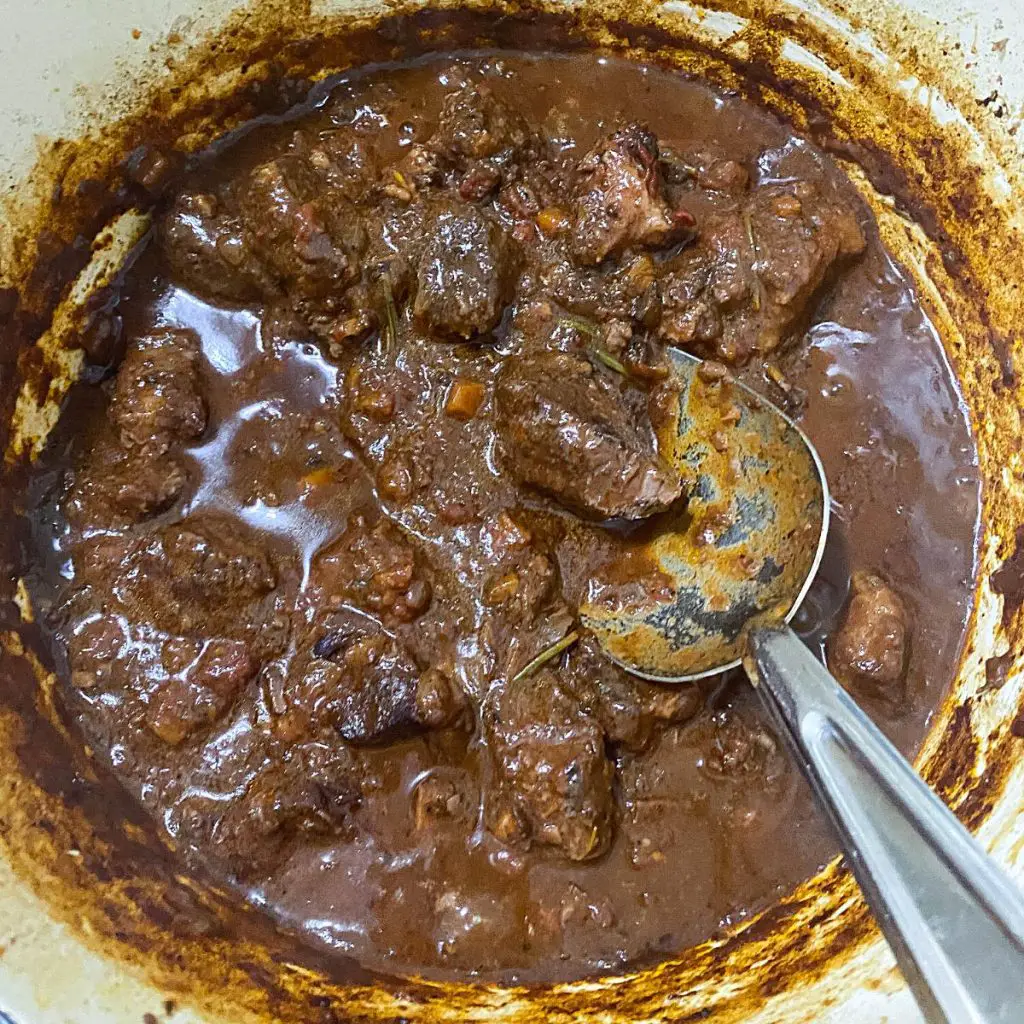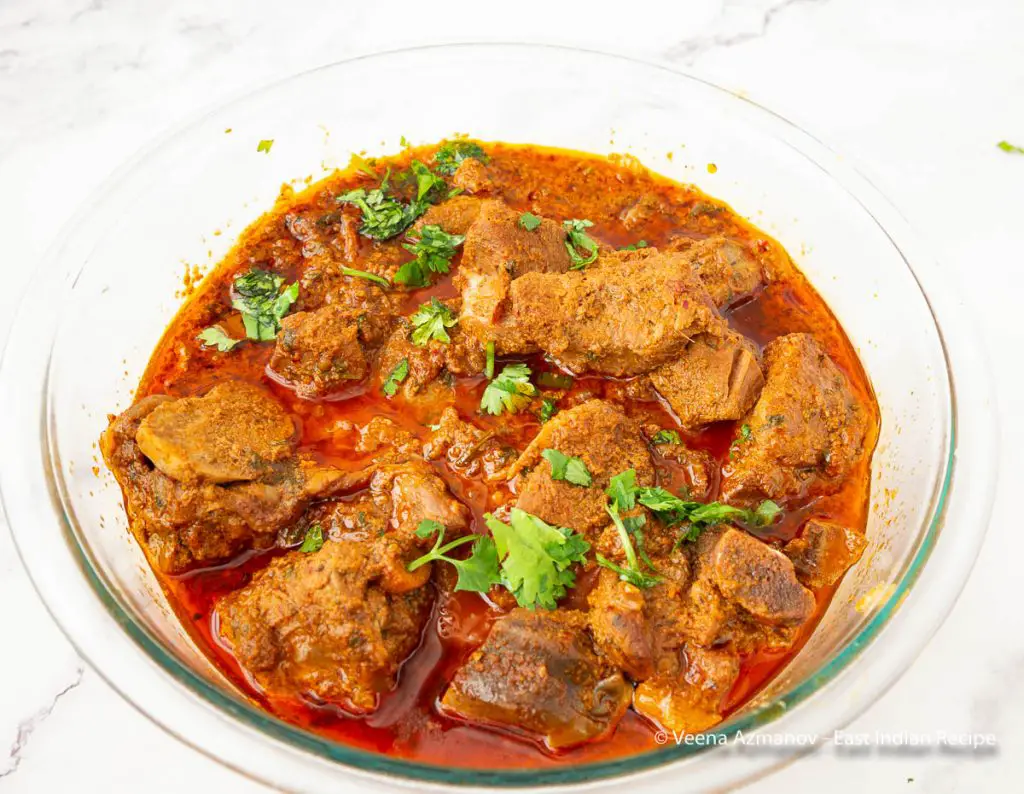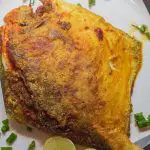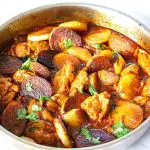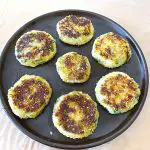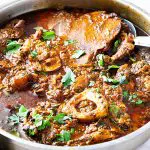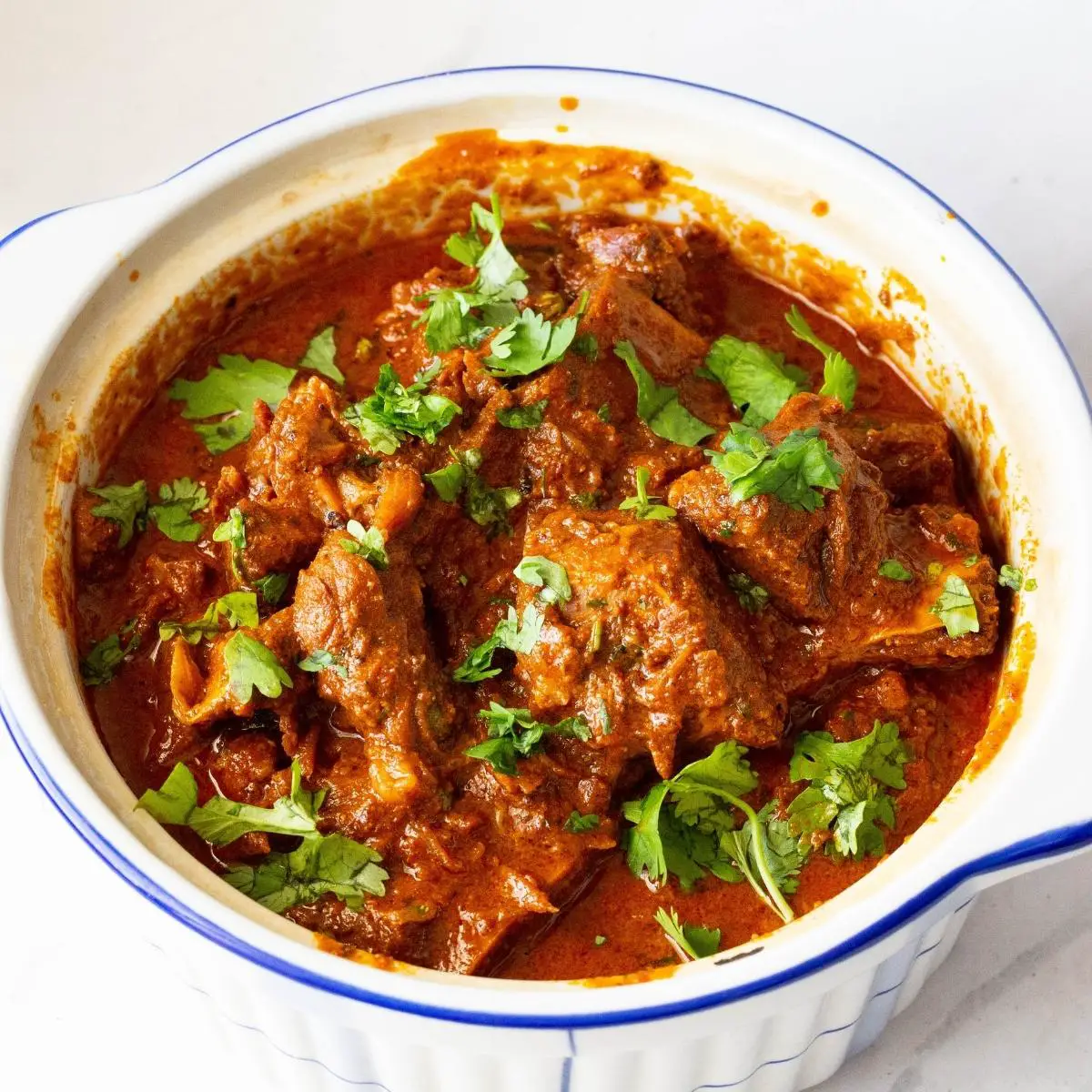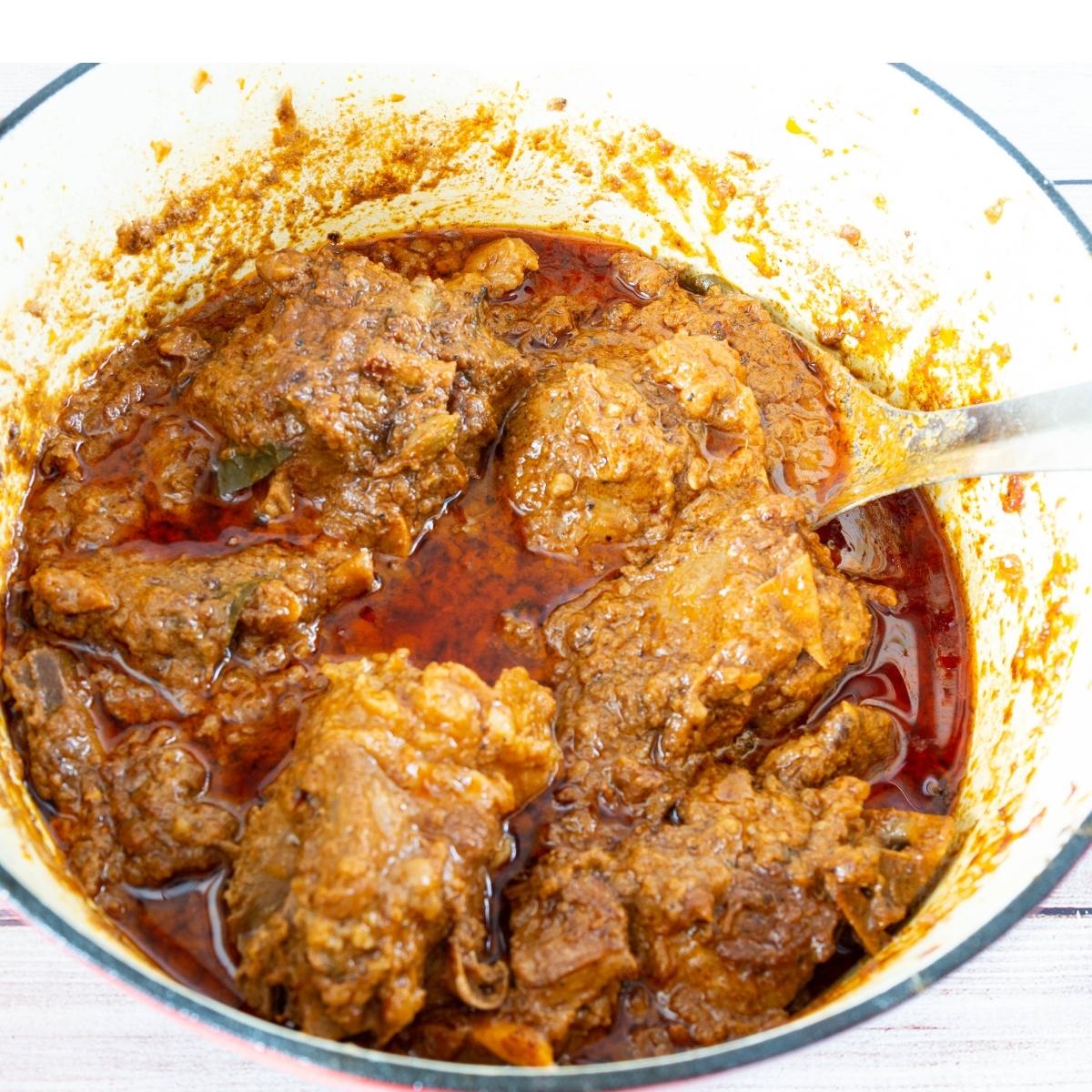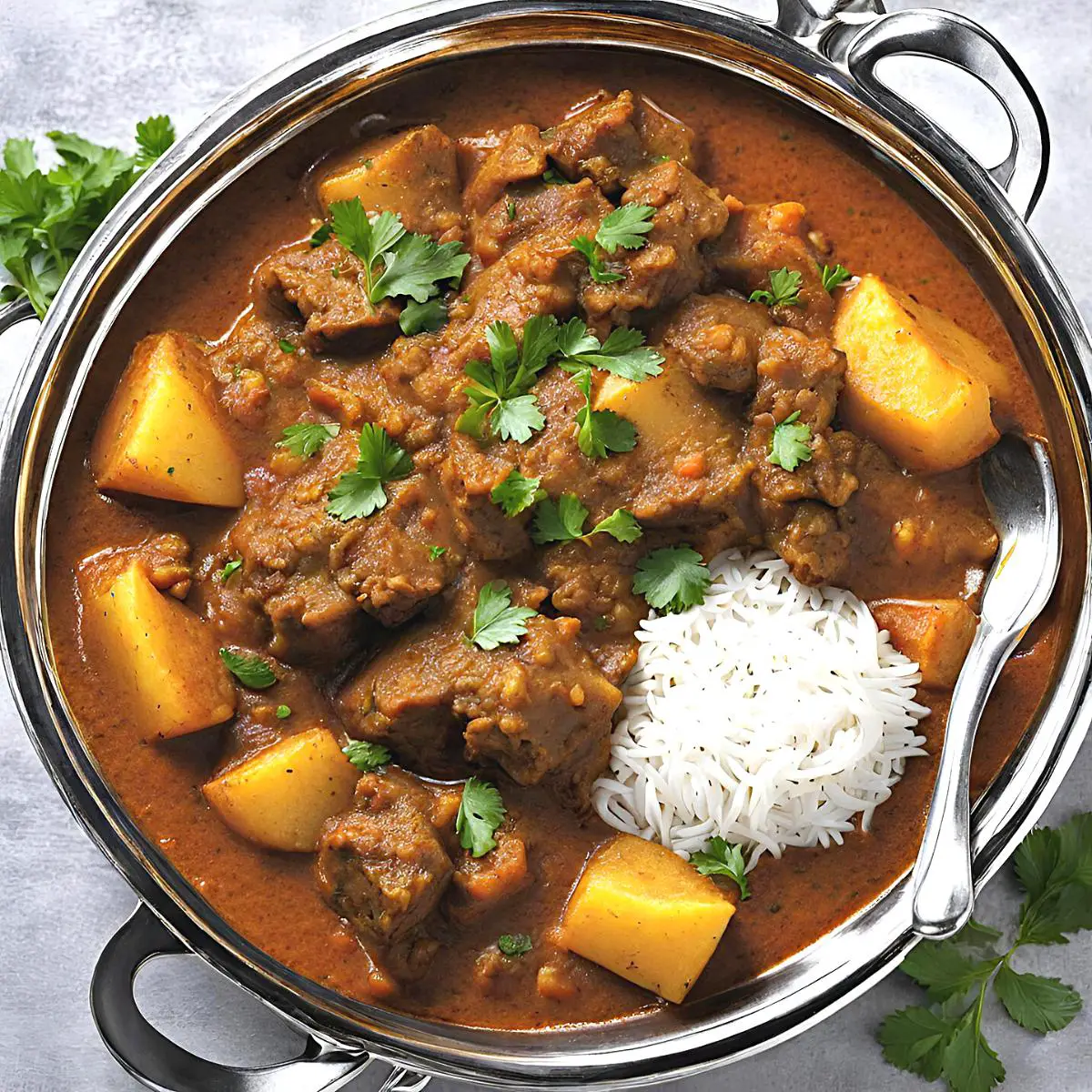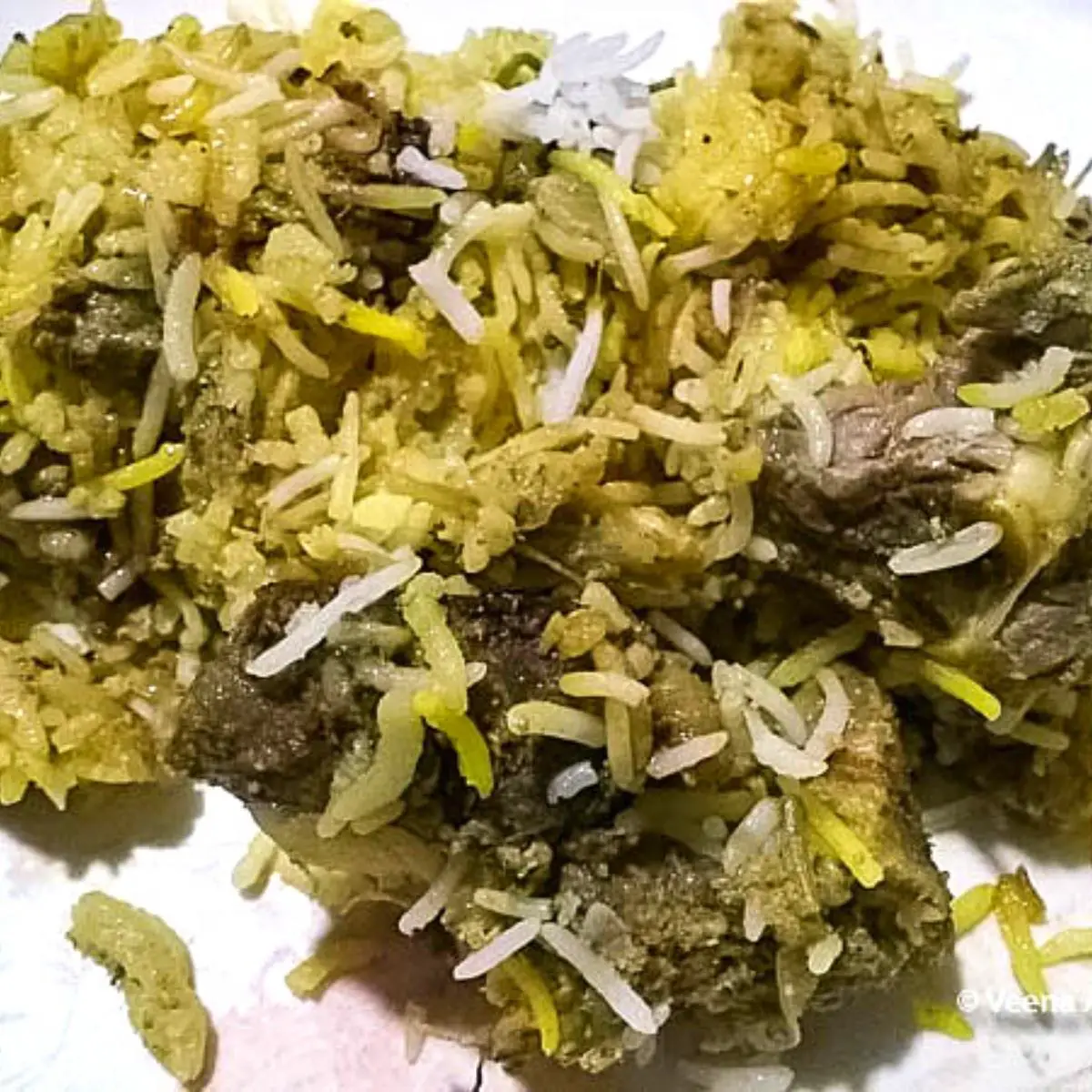Mutton Paya – Goat Trotters Curry
Imagine a steaming bowl of melt-in-your-mouth mutton paya curry, delicately spiced and bursting with flavors that transport you to a distant land. With its tender goat trotters simmered to perfection, this humble dish holds a secret story waiting to be unveiled.
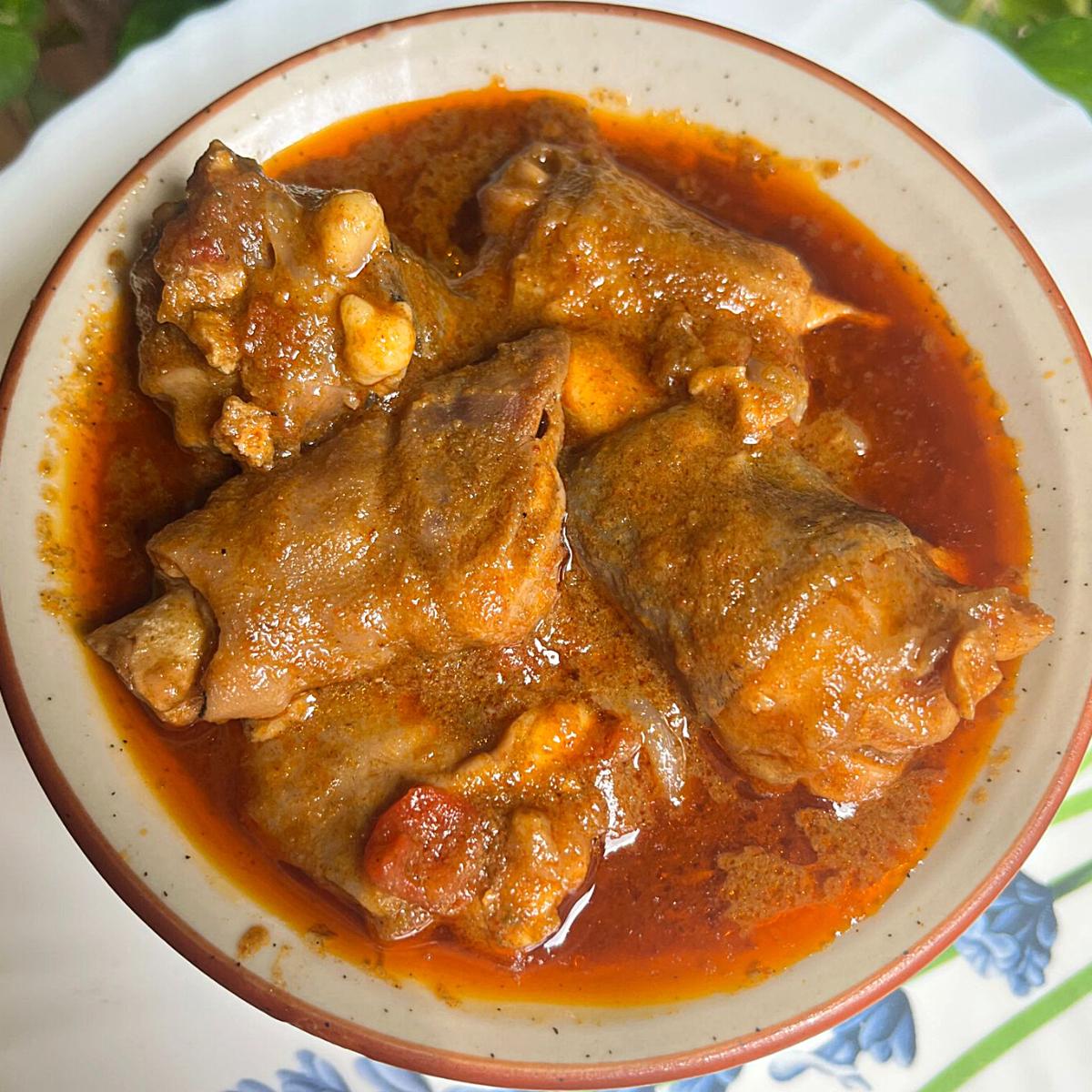
From the rugged terrains of its origins to the bustling kitchens of modern chefs, the tale of mutton paya curry is as intriguing as it is delicious.
What are goat trotters?
Goat trotters are the lower part of the goat’s legs, containing the bones, tendons, and connective tissues. While they might seem unconventional to some, these humble yet flavorful elements hold the secret to creating the rich and hearty mutton paya curry. The bones and connective tissues in the trotters release gelatin during the slow cooking process, resulting in a thick, luscious gravy that coats the tender meat and enhances the overall taste.
What makes goat trotters truly remarkable is their ability to transform into a melt-in-your-mouth delicacy through slow cooking. As they simmer away in a delectable blend of spices and aromatic herbs, the gelatinous goodness dissolves into the curry, creating a velvety texture that is both satisfying and comforting. The unique combination of flavors, textures, and aromas that goat trotters bring to mutton paya curry is what makes this dish truly special.
It’s important to note that goat trotters aren’t just limited to mutton paya curry. They are also used in various other cuisines around the world, where they add depth and richness to stews, soups, and broths. Their versatility and ability to infuse dishes with intense flavors have made them a beloved ingredient in many cultures.
Origins of Mutton Paya Curry:
To truly understand the origins of mutton paya curry, we must return to the rich cultural tapestry of the Indian subcontinent. This traditional dish holds a special place in Indian cuisine, with roots that reach deep into the country’s diverse culinary traditions.
The origins of mutton paya curry can be traced back to the Mughal era, when the influence of Persian cooking techniques and flavors merged with the indigenous flavors of India. During this period, the art of slow-cooking and incorporating unique spices became prevalent in Indian kitchens.
Mutton paya curry, also known as trotter curry, is a dish that showcases the inventive use of goat trotters. These humble, yet flavorful, ingredients were traditionally used to create a broth-like curry that combined the robust flavors of the trotters with a medley of aromatic spices. This slow-cooked dish allowed the flavors to meld together, resulting in a tender and intensely flavorful experience.
Apart from India, the tradition of using goat trotters in cooking can be found in various other cuisines around the world. From the rich broths of Vietnamese pho to the hearty stews of Moroccan cuisine, goat trotters have been revered for their ability to add depth and richness to a wide range of dishes. Their versatility and distinctive taste have made them a cherished ingredient across cultures and continents.
The evolution of mutton paya curry from a traditional dish to a trendy culinary sensation is a testament to the fusion of tradition and innovation. This classic dish has captured the hearts and taste buds of food enthusiasts, both within and beyond Indian borders. Its popularity is a testament to the fact that while culinary trends may come and go, the essence of traditional cooking methods and flavors remain timeless.
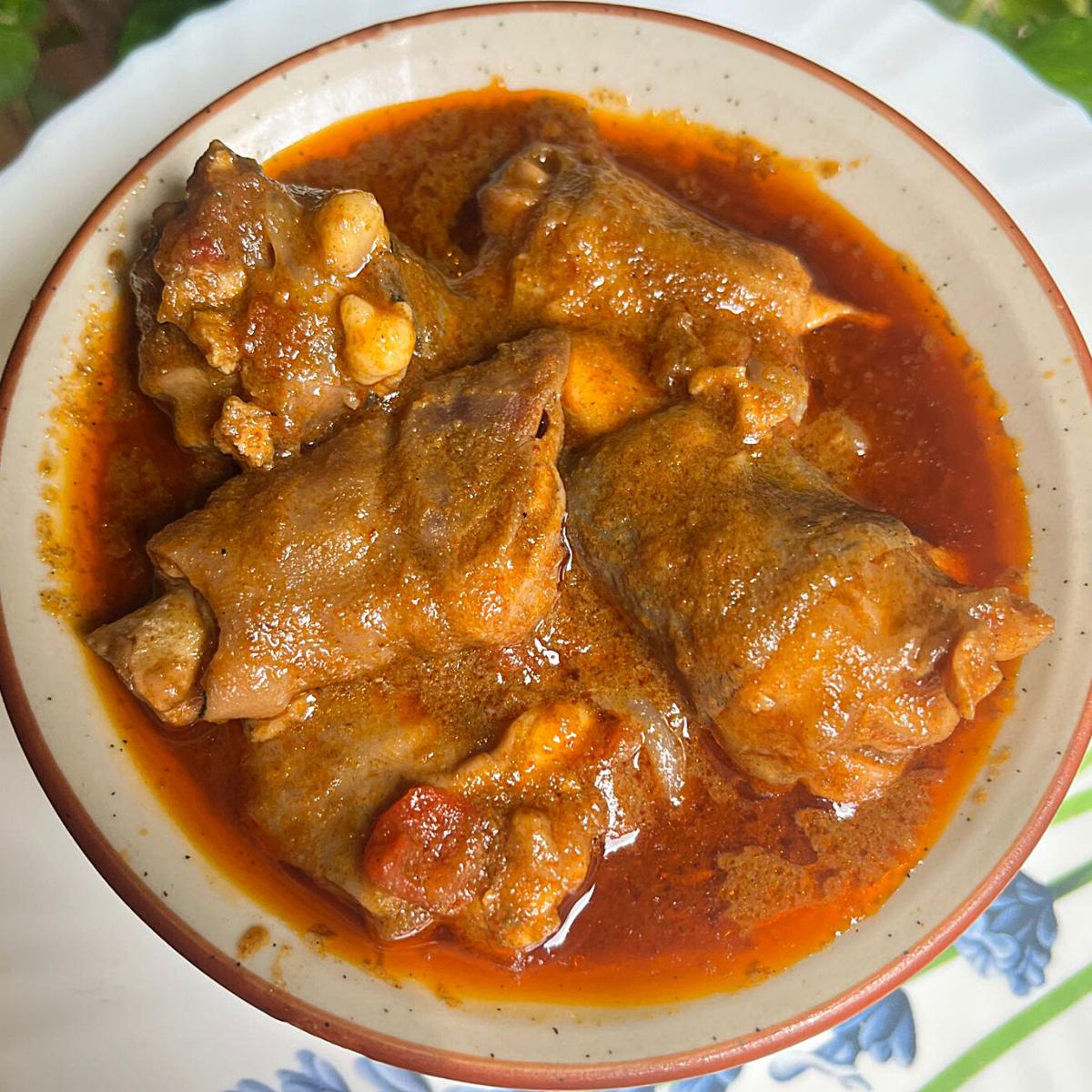
Ingredients and substitutes
- At the heart of mutton paya curry are the paya, or trotters, which impart a unique gelatinous texture and deep flavor to the dish. However, if you are unable to find mutton trotters, beef or lamb shanks can be a suitable substitute. These cuts of meat also contain a good amount of collagen, which contributes to the thickness of the curry.
- Another essential ingredient of this dish is the medley of spices, which create the aromatic base for the curry. Garam masala, coriander powder, turmeric, red chili powder, and cumin seeds are commonly used spices that lend their distinct flavors to mutton paya curry. For those who prefer a milder version, reducing the amount of red chili powder or using paprika can help achieve a less spicy but equally flavorful result.
- To add a tangy twist to the dish, tomatoes are often added to balance the richness of the meat. If you’re looking for a substitute, tamarind paste or lemon juice can be used to achieve a similar effect. Additionally, the inclusion of onions, garlic, and ginger in the recipe provides a savory undertone and enhances the overall taste. However, for those with specific dietary needs or preferences, these can be omitted or replaced with alternatives such as shallots or ginger paste.
- Lastly, the use of aromatic herbs like cilantro or mint leaves as a garnish adds a fresh note to the mutton paya curry. These herbs not only enhance the visual appeal of the dish but also introduce a burst of refreshing flavor. If you don’t have access to these herbs, you can experiment with other leafy greens such as parsley or basil to bring a different twist to your curry.
Tips for making goat trotters khudi
- First and foremost, it is important to select fresh and high-quality goat trotters. Look for trotters that are firm, with clean and well-trimmed hooves. This will ensure a rich and flavorful broth. Cleaning the trotters thoroughly is essential to remove any dirt or impurities. Soak them in water for a few hours, changing the water multiple times, until it runs clear.
- Once the trotters are clean, it’s time to give them a good boil. In a large pot, add the trotters along with water, onions, ginger, garlic, and spices such as black cardamom, cinnamon, and cloves. Simmer the mixture for several hours, until the trotters are tender and the flavors have melded together. Skim off any impurities that rise to the surface to ensure a clear and clean broth.
- The next step involves preparing the khudi, which is essentially a thick gravy made from sautéed onions, tomatoes, and a blend of aromatic spices. In a separate pan, heat oil or ghee and add finely chopped onions. Cook them until they turn golden brown, then add ginger-garlic paste and cook for a few more minutes. Add tomatoes and cook until they become soft and mushy. Finally, add a combination of spices such as turmeric, red chili powder, coriander powder, and cumin powder. Stir well and cook until the oil separates from the mixture.
- Now, it’s time to combine the boiled trotters with the prepared khudi. Transfer the trotters along with their broth to the pan containing the khudi. Gently mix everything together and let it simmer for another 15-20 minutes. This will allow the flavors to blend and the trotters to absorb the rich flavors of the gravy.
- To enhance the taste and texture of the dish, you can garnish it with fresh cilantro or mint leaves, which add a refreshing element. Serve the goat trotters khudi hot with freshly baked naan bread or steamed rice. The tender trotters and flavorful khudi will make for a truly satisfying meal.
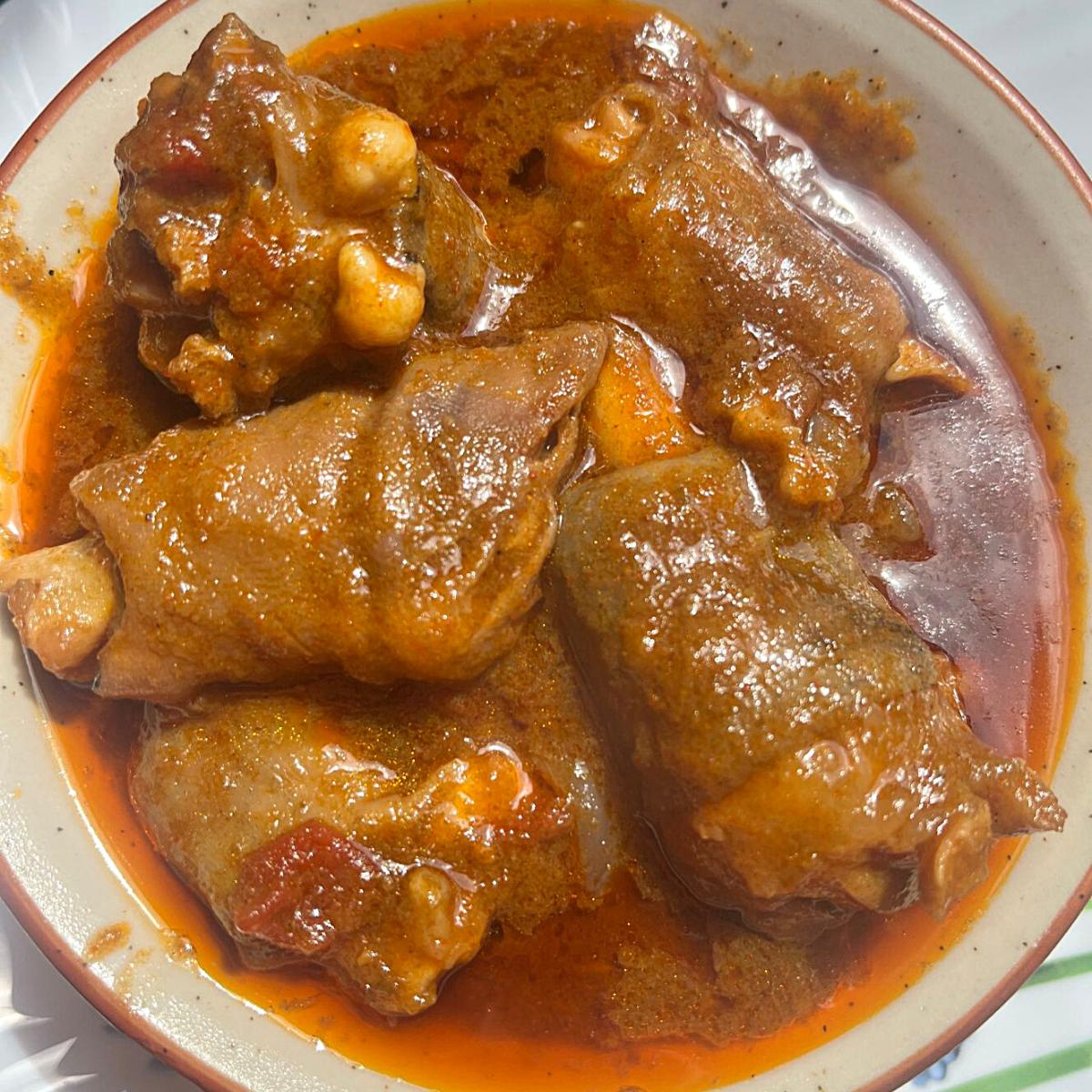
Ways to serve paya curry
When it comes to serving paya curry, there are a few options that can elevate your culinary experience.
- One traditional way is to serve it with naan bread or steamed rice, which complements the rich flavors of the dish. The soft and fluffy naan bread can be used to scoop up the tender meat and the flavorful broth, creating a perfect bite.
- If you want to add a touch of freshness to your mutton paya curry, consider serving it with a side of raita. This yogurt-based accompaniment not only provides a cooling contrast to the spicy flavors but also adds a creamy texture to the overall dish. You can make raita by mixing yogurt with finely chopped cucumbers, tomatoes, onions, and a sprinkle of cumin powder.
- For those looking to explore more diverse flavors, you can serve paya curry alongside some tangy pickles or chutneys. The pickles’ sour and spicy notes can complement the rich and savory flavors of the curry, creating a harmonious balance on your taste buds. Similarly, an assortment of chutneys like mint chutney or tamarind chutney can add a burst of flavors to each bite.
- If you’re feeling adventurous, you can even experiment with fusion dishes. For instance, you can use the mutton paya curry as a filling for soft tacos or wraps. The combination of the tender trotters with fresh vegetables and a drizzle of tangy sauce can create a unique and delicious fusion dish.
Coconut Mutton Curry
Country Captain Mutton Curry
Goan Mutton Curry
Aloo Gosht – Indian Lamb and Potato Curry Recipe
Frequently asked questions
Yes, mutton paya curry typically has a rich and spicy flavor. The combination of aromatic spices and slow-cooked goat trotters creates a deliciously hot and flavorful curry. However, the level of spiciness can be adjusted to personal preference by varying the amount of spices used in the dish.
While mutton paya curry traditionally uses goat trotters, you can definitely experiment with other meats. Lamb trotters or beef trotters can be used as alternative options to create a similar dish. However, it’s important to note that the taste and texture may vary slightly, so adjustments to the cooking time and spices might be needed.
The cooking time for mutton paya curry can vary depending on the size and tenderness of the goat trotters. Generally, it takes around 2 to 3 hours of slow cooking to achieve the desired tenderness. However, using a pressure cooker can significantly reduce the cooking time to around 45 minutes to 1 hour. It’s important to allow enough time for the flavors to meld together and the trotters to become tender.
Absolutely! In fact, mutton paya curry often tastes even better when reheated the next day as the flavors have had more time to develop. Simply store it in an airtight container in the refrigerator and reheat gently on the stovetop or in the microwave when ready to serve. You can also freeze the curry for future use, allowing you to enjoy this delicious dish whenever you crave it.
Yes, there are several side dishes that complement mutton paya curry beautifully. Traditional accompaniments include naan bread, roti, or rice. The bread can be used to soak up the flavorful curry, while the rice provides a perfect base for the tender trotters. Additionally, a fresh cucumber and mint raita or a zesty salad can add a refreshing contrast to the rich flavors of the curry.
Mutton Stew
Mughlai Mutton Kheema
Mutton Khudi Curry
Aloo Gosht – Indian Lamb and Potato Curry Recipe
Pin this and other East-Indian Recipes on Pinterest here. Don’t forget to like and Follow for more recipes.

Mutton Paya – Goat Trotters Khudi Curry
Print Pin RateEquipment /Tools
- Skillet
- Cutting Board
- Kitchen Knife
- Wooden spoon
Ingredients
- 1 kg (2 lb) Goat Trotters Mutton paya
- 2 tbsp Cooking oil
- 1 tbsp Bottle masala (or curry powder)
- 2 tbsp Vinegar
- 1 tbsp Salt
- 1/2 tsp Pepper
Spice paste / Masala
- 2 cups Onions chopped
- 4 Chillies green
- 2 cups Fresh coconut grated
- 2 inch Ginger
- 8 cloves Garlic
Instructions
- Roast masala – In a frying pan, dry roast the freshly grated coconut until lightly toasted. Remove from the pan and set aside. Dry roast the onions, chilies, ginger, and garlic in the same pan. Transfer to a food processor or blender and blend until smooth. Set asidePro tip – you may need 1/4 to 1/2 cup water to help grind everything to a smooth paste.2 cups Onions, 2 cups Fresh coconut, 2 inch Ginger, 8 cloves Garlic, 4 Chillies
- Pressure cooking – In a pressure cooker over medium-high heat, add the ground masala paste and saute for 2 minutes. Then add the bottle masala, and sauté for a minute more. Add two cups of water and season with salt and pepper. Then, add the trotters (paya pieces). Make sure they are immersed in the water. Pro tip – Alternatively, use an instant pot pressure cooker use the saute mode.2 tbsp Cooking oil, 1 tbsp Bottle masala, 1 tbsp Salt, 1/2 tsp Pepper, 1 kg Goat Trotters
- Stovetop pressure cooker – Cover the pressure cooker and cook on high for 30 to 35 minutes (about 5 to 6 whistles) Release pressure naturally. Instant pot – Press the cancel button to stop the saute, then close the lid and seal the vent. Press the pressure cooker button (on high) and set the timer for 25 minutes. Let the pressure release naturally. Skillet – Cover and cook for 60 to 90 minutes on medium-low until the mutton is cooked and the potatoes are tender. (mutton can take up to 2 hours to become soft)
- Finally, add the vinegar – cook a minute more. Taste and adjust seasoning. Garnish with fresh cilantro.2 tbsp Vinegar
- Enjoy
About Videos – most recipes has two videos – a quick version in the post & longer detailed version on this recipe card. Please do subscribe to my channel if you like my videos
Nutrition Information
The nutrition information and metric conversion are calculated automatically. I cannot guarantee its accuracy. If this data is important to you please verify with your trusted nutrition calculator. Thank you



